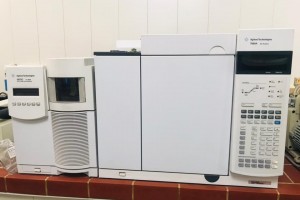
The College of Education for Pure Sciences, Department of Chemistry, discussed a doctoral thesis on (A study of oxidative stress in patients with hypertension)
The thesis submitted by the researcher (Maha Abdul Hussein Hamid) included evaluating the levels of antioxidant enzymes: superoxide dismutase (SOD), catalase (CAT), glutathione peroxidase (GPX3), glutathione-S-transferase (GSTs), and estimating the level of protein carbonyl concentration (PC) as an indicator of oxidative stress, and studying the lipid profile (TC), TG, LDL, HDL, and VLDL) and trace elements (iron, zinc, selenium, and copper) in patients with hypertension. Blood samples were collected at Al-Hartha Primary Health Care Center in Basra Governorate, Iraq.
The study revealed significant decreases in the levels of antioxidant enzymes SOD, CAT, GSTs, and GPX3, HDL, and trace elements Fe, Zn, Se, and Cu in hypertensive patients, with significant increases in PC, TC, TG, LDL, and VLDL levels compared to the control group. SOD, CAT, and GSTs levels decreased with age, while no significant differences were observed in GPX3. A positive association was also found between PC and age, with an increase in TC and LDL levels with age. The study revealed strong correlations between SOD, CAT, GSTs, and GPX3 and a positive association with trace elements Fe, Zn, Se, and Cu. Antioxidants also showed strong predictive ability in distinguishing between patients and healthy individuals. Together, these findings suggest that there is an imbalance in redox and trace element levels in hypertensive patients, which may contribute to the aggravation and progression of the disease. It also appears that patients with high blood pressure are more susceptible to atherosclerosis and heart disease. This study opens new horizons for understanding the mechanisms of high blood pressure and developing future therapeutic strategies. Measuring antioxidant levels and oxidative stress can be used as an additional diagnostic tool to assess the risk of developing high blood pressure and monitor patients' response to treatment.









